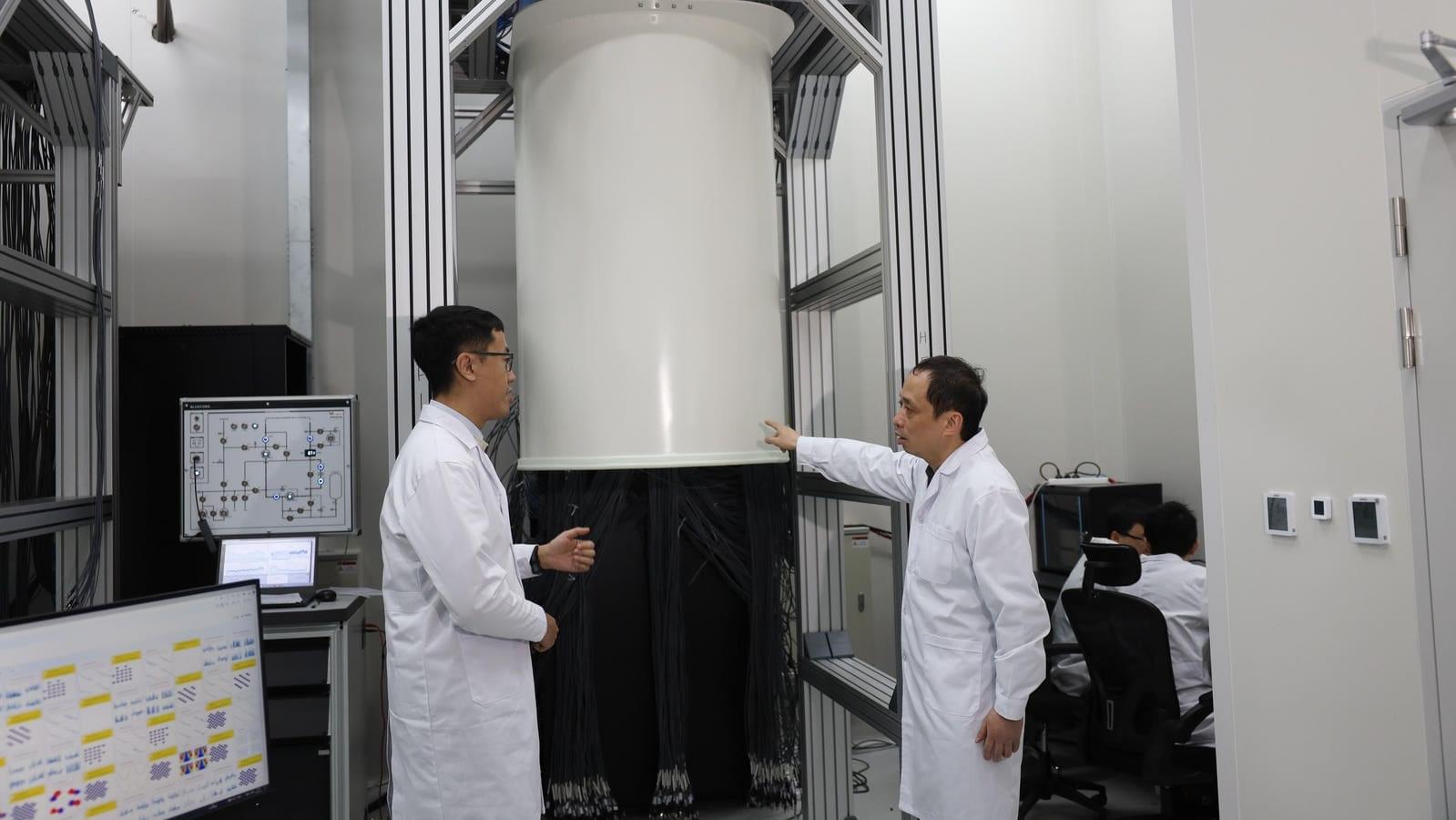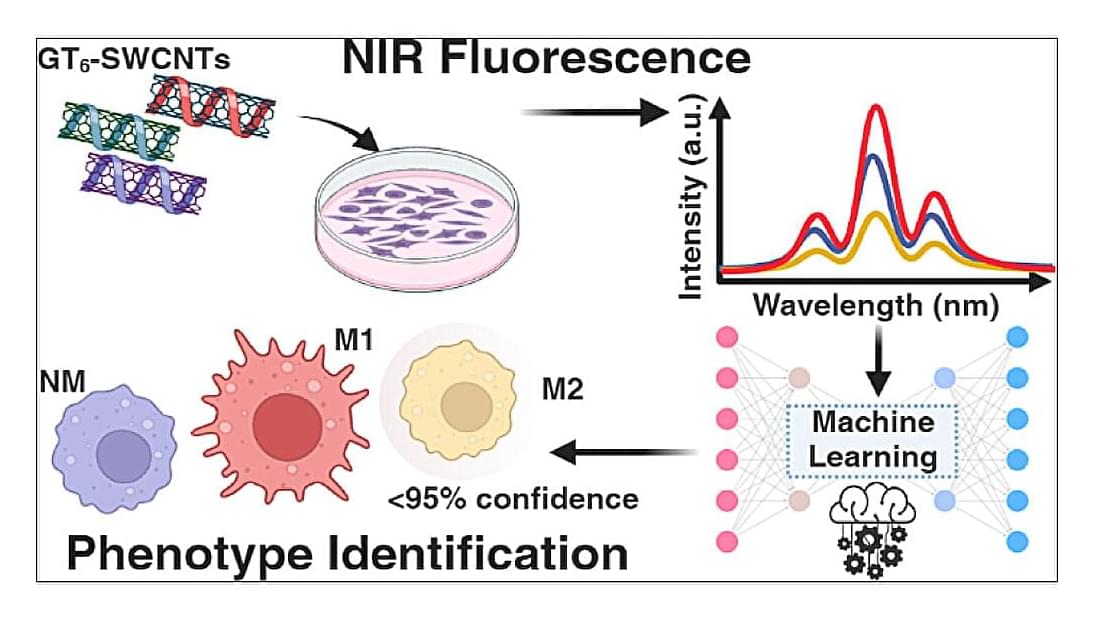China’s Zuchongzhi-3 ignites a fierce quantum race with Google’s Willow, pushing quantum singularity from theory toward reality faster than skeptics predicted.
Early diagnosis is crucial in disease prevention and treatment. Many diseases can be identified not just through physical signs and symptoms but also through changes at the cellular and molecular levels.
When it comes to a majority of chronic conditions, early detection, particularly at the cellular level, gives patients a better chance for successful treatment. Detection of early changes at the cellular level can also dramatically improve cancer outcomes.
It’s against this backdrop that a University of Rhode Island professor and a former Ph.D. graduate student looked at understanding the smallest changes between two similar cells.
New simulations suggest that habitable worlds could have begun forming only 200 million years after the big bang.
By Conor Feehly edited by Lee Billings
Scientists today are quite sure about how long our universe has existed: it’s been 13.8 billion years, give or take 59 million years, since the cosmos burst into being via the big bang. But they’re much less certain about a related question: When could life have first arisen, somewhere out there? Our solar system formed a mere 4.6 billion years ago, after two thirds of cosmic time had already elapsed, and life seems to have happened here almost as soon as Earth cooled down from its fiery birth to harbor oceans of liquid water.
Farming arose on multiple continents among populations with radically different cultures and environments and with no means of communicating with each other – how did it crop up independently at about the same time?
Researchers at the University of Twente, in collaboration with the City University of Hong Kong, have designed a cutting-edge programmable photonic chip in a thin-film lithium niobate platform, an important material in photonics. Published in Nature Communications, this work paves the way for next-generation high-performance radar and communication applications.
An important material is changing the way optical chips work, making them smaller, faster, and more efficient: thin-film lithium niobate (TFLN). It offers exceptional properties for how light and electrical signals can interact. This enables the seamless integration of key components—such as electro-optic modulators and signal processors—onto a single chip. As a result, optical devices can achieve unprecedented compactness, efficiency, and performance.
Researchers at the University of Twente have designed a TFLN-based integrated photonic chip, working in close collaboration with City University of Hong Kong, where the fabrication takes place. At the same time, these chips are also being fabricated locally in the MESA+ Nanolab.
Charging forward at top speed, a garden snail slimes up 1 millimeter of pavement per second. By this logic, Beckman Institute for Advanced Science and Technology researchers’ new 3D printing process speeds past existing methods—at a snail’s pace.
Researchers in Beckman’s Autonomous Materials Systems Group created “growth printing,” which mimics tree trunks’ outward expansion to print polymer parts quickly and efficiently without the molds and expensive equipment typically associated with 3D printing. Their work appears in the journal Advanced Materials.
“Humans are incredibly talented at making things. Completely new manufacturing processes are hard to find. Growth printing is entirely new, which is thrilling,” said Sameh Tawfick, a professor of mechanical science and engineering at the University of Illinois Urbana-Champaign and project lead.
Empa researchers are working on producing artificial muscles that can keep up with the real thing. They have now developed a method of producing the soft and elastic yet powerful structures using 3D printing.
One day, these could be used in medicine or robotics—and anywhere else where things need to move at the touch of a button. The work is published in the journal Advanced Materials Technologies.
Artificial muscles don’t just get robots moving: One day, they could support people at work or when walking, or replace injured muscle tissue. However, developing artificial muscles that can compare to the real thing is a major technical challenge.
Two decades on from the first reported covalent organic frameworks, Nina Notman investigates what their future holds.
3D integrated circuits promise smaller, faster devices with lower power consumption. Vertically stacked 3D integrated circuits also enable novel in-memory and in-sensor computing paradigms and incorporate functionally diverse materials, which can benefit many edge applications. There are several complementary approaches to 3D integration. For example, 3D heterogeneous integration involves stacking and interconnecting multiple chips, each potentially made from different materials or optimized for different functions, within a single package. On the other hand, 3D monolithic integration refers to fabricating layers of transistors sequentially on a single wafer, creating a more seamless and compact structure. This approach offers even greater density and performance benefits by reducing interlayer distances and improving signal integrity. Both techniques are crucial for advancing the next generation of high-performance, energy-efficient electronic devices and require interdisciplinary collaborations across materials science, electrical engineering, and semiconductor manufacturing.
In this Communications Engineering collection, we aim to drive research in the engineering side of 3D integration by bringing together the following topics of interest:









